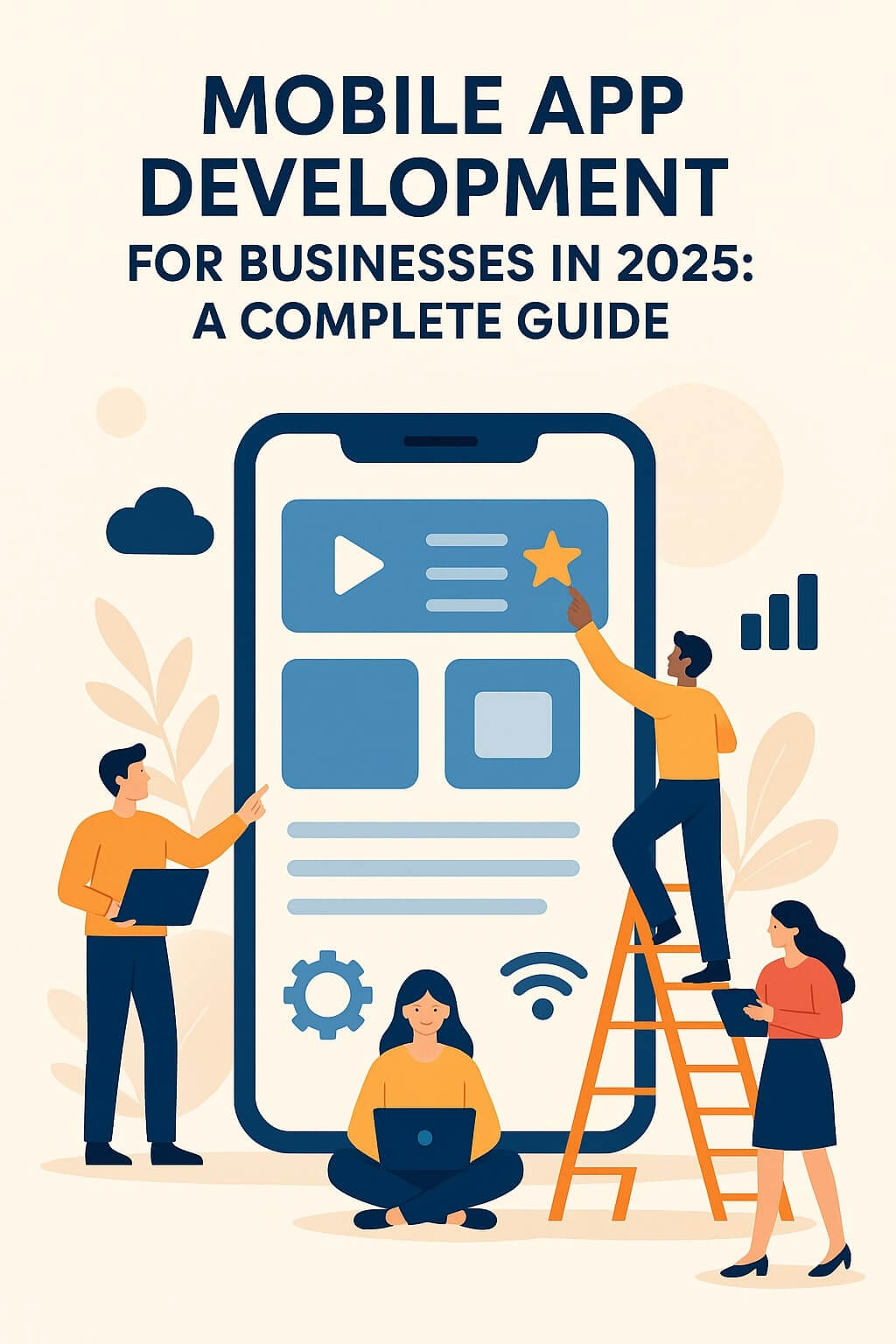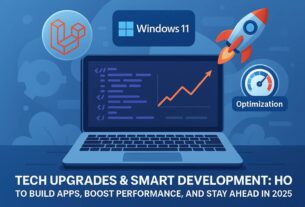Mobile apps aren’t just “nice-to-have” anymore they’ve become the lifeline for businesses in 2025. Whether you’re running a local coffee shop or managing a multinational brand, your customers expect you to be just a tap away. But the real question is how do you build an app that people actually use and love?
In this guide, we’ll break down everything you need to know about mobile app development, from picking the right platform to launching and marketing your app like a pro.
Why Mobile Apps Are No Longer Optional
The shift from web-first to mobile-first
Remember when most people visited websites from their desktop? That’s ancient history. These days, mobile usage dominates, and if your business isn’t optimised for it, you’re already losing customers. Apps provide a smoother, more personalised experience than a mobile browser ever could.
How customer behaviour has changed
Customers now expect instant access, personalised recommendations, and seamless payments. A slow website or clunky interface can make them switch to your competitor in seconds.
The impact on small vs large businesses
Big brands use apps to reinforce loyalty; small businesses use them to stand out. Either way, the opportunity is huge if you do it right.
Understanding the App Development Landscape
Native apps
Built specifically for iOS or Android, these apps offer high performance and access to all device features.
Hybrid apps
These combine web and mobile technologies, making them quicker to develop but sometimes less optimised than native apps.
Progressive Web Apps (PWAs)
Think of these as websites that act like apps. They’re budget-friendly and work across platforms, but they can’t always match the performance of native apps.
Choosing the Right Platform for Your Business
iOS vs Android – What’s the difference?
iOS users generally spend more per purchase, while Android dominates global market share. Your choice depends on your target audience.
When to prioritise iOS first
If your audience is in developed markets like the US or UK, iOS might be the first choice. You might even need an iPhone App Developer Guide to get started.
When Android makes more sense
If you’re targeting emerging markets, Android’s affordability and reach make it a stronger contender.
Planning Your App the Smart Way
Define your target audience
If you don’t know who you’re building for, you’ll end up building for no one.
Research competitors and industry trends
Look at what’s working for others and what’s not.
Create a feature priority list
Not all features are essential at launch. Start lean, then add more over time.
The Development Process Explained
Ideation and wireframing
This is where you sketch your app’s layout and flow.
UI/UX design principles for engagement
Design isn’t just about looks it’s about making your app intuitive and enjoyable.
Coding and backend integration
This is where your idea comes to life with actual functionality.
Testing and quality assurance
No app is perfect, but catching bugs early saves time and money.
Deployment and launch
Whether you’re using an android app maker or coding from scratch, this is the moment your app meets the world.
iOS Development Essentials
Why iOS users are different
They’re often more brand loyal and willing to pay for quality.
Tools and frameworks for iPhone development
Swift, Xcode, and Apple’s APIs are your main tools.
Monetisation opportunities on iOS
From in-app purchases to subscriptions, iOS apps offer several revenue streams.
Android Development Essentials
Android’s global dominance
With billions of devices, Android remains the most widely used platform.
Tools and frameworks for Android development
Kotlin, Android Studio, and Jetpack libraries are key for building apps.
How to make your Android app stand out
User-friendly design, optimised performance, and applying some Android App Development Secrets can give you an edge.
Hidden Costs & Budget Planning
Development costs
Your app’s complexity directly affects cost.
Maintenance and updates
Apps aren’t “one-and-done.” They need ongoing updates.
Marketing and user acquisition
Without promotion, even the best app won’t get noticed.
Common Mistakes to Avoid
Skipping user testing
If you launch without testing, expect negative reviews.
Overloading features
More features don’t always mean better. Keep it simple.
Ignoring post-launch support
An app without updates quickly becomes irrelevant.
Marketing Your App for Success
ASO (App Store Optimization)
Think of this as SEO for app stores.
Leveraging social media
Influencer collaborations and reels can create a buzz.
Paid advertising strategies
Google App Campaigns and Apple Search Ads can help you scale faster.
Future Trends in Mobile App Development
AI integration
From chatbots to predictive analytics, AI is shaping app experiences.
Voice-based interfaces
Voice commands make apps more accessible.
AR and VR experiences
Immersive technologies are moving beyond gaming into retail, healthcare, and more. Many Top iPhone App Development Companies are already exploring these features.
Final Thoughts
Mobile app development in 2025 is about more than just coding it’s about creating meaningful, seamless, and engaging user experiences. Whether you go for iOS, Android, or both, the key is to focus on your audience, test your ideas, and adapt quickly to feedback.
Author: Pratik Patel
WEDOWEBAPPS
is
a
leading
USA-based
software
development
company
delivering
end-to-end
digital
solutions
for
enterprises
and
startups.



